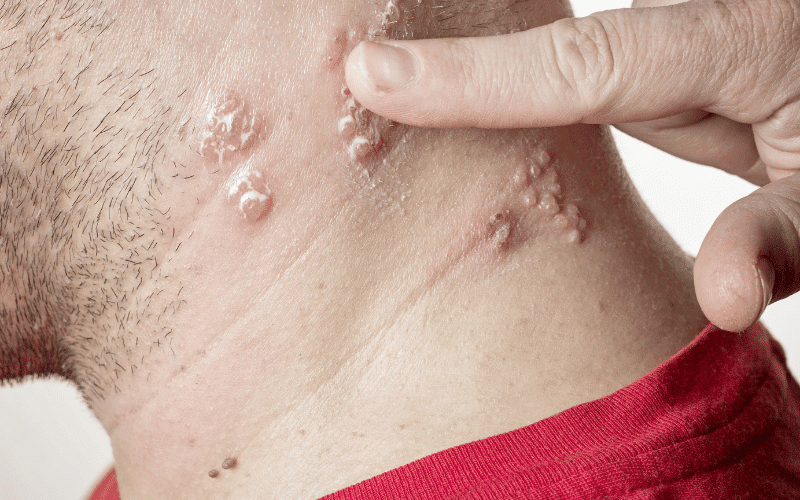9. Shingles – A Painful Viral Skin Infection

Shingles, also known as herpes zoster, is a painful viral skin infection caused by the varicella-zoster virus, the same virus responsible for chickenpox. Shingles occurs when the virus reactivates in the nerve cells, causing a painful rash that typically appears as a single stripe of blisters on one side of the body or face.
Shingles can affect individuals who have previously had chickenpox, as the virus remains dormant in the nerve cells after the initial infection. Factors that can increase the risk of shingles include aging, stress, and a weakened immune system.
Treatment for shingles involves antiviral medications to reduce the severity and duration of the infection, as well as pain relievers and anti-inflammatory drugs to alleviate discomfort. In some cases, corticosteroids may be prescribed to reduce inflammation and the risk of complications. It’s essential to seek medical attention promptly if you suspect shingles, as early treatment can help prevent the risk of long-term complications, such as postherpetic neuralgia (persistent nerve pain after the rash has healed).
To prevent shingles, a vaccine is available for individuals aged 50 and older, which can significantly reduce the risk of developing the infection or lessen its severity if it does occur. If you’ve had chickenpox, speak with your healthcare provider about whether the shingles vaccine is appropriate for you. (9)